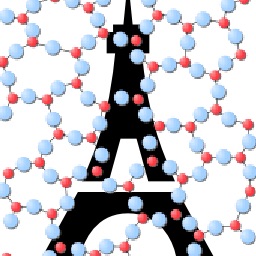Stretched Exponential Relaxation of Glasses: Origin of the Mixed-Alkali Effect
As non-equilibrium materials, glasses continuously relax toward the supercooled liquid meta-stable equilibrium state [1, 2]. Although the myth of flowing glasses in cathedrals suggests otherwise [3], the dramatic increase of glass viscosity with decreasing temperature renders relaxation effectively “frozen” at ambient temperature. However, specific glass compositions can surprisingly deform over time, even at low temperature. This phenomenon is known as the thermometer effect [1, 4] and is usually attributed to the mixed alkali effect (MAE), which is observed in oxide glasses comprising at least two alkali oxides, AO2 and BO2, and manifests itself by a nonlinear evolution of the properties with respect to the fraction A/(A + B). Despite its practical importance [5], the nature of relaxation in the glassy state remains poorly understood. To date, no clear atomistic mechanism of structural and stress relaxation is available, which seriously limits our ability to predict and control their behavior [6]. This gap of knowledge becomes even more problematic as (1) the need for large screens with higher resolution (smaller pixel size) results in lower tolerances for relaxation, and (2) novel LCD fabrication processes (e.g., pSi applications) require the use of higher processing temperatures, further enhancing relaxation [5]. Addressing these Grand Challenges [7] requires a better understanding of the fundamentals of glass relaxation, which is the goal of the present thesis project.
